Score breakdown
Things we like
- Excellent turbo powertrain
- Updated technology
- Plenty of cabin space
Not so much
- Halogen headlights
- Infuriating speed limit assist
- Poorly specced for $40K vehicle
Facing fresh competition from the recently-launched Toyota Corolla Cross and Nissan Qashqai, Kia rolled out a comprehensive mid-life update for its Seltos small SUV last November.
It brings an exterior refresh, a redesigned centre stack with a digital instrument cluster, and improved technology – including Kia’s connected-car functionality – as it looks to retain a strong market share in the competitive segment.
Beyond the updated design and added technology, there’s also a new turbo-petrol engine and a much-needed eight-speed torque converter automatic transmission to replace the twitchy dual-clutch gearbox.
We spent a week behind the wheel of the 2023 Kia Seltos Sport+ 1.6T AWD to see how it stacks up.
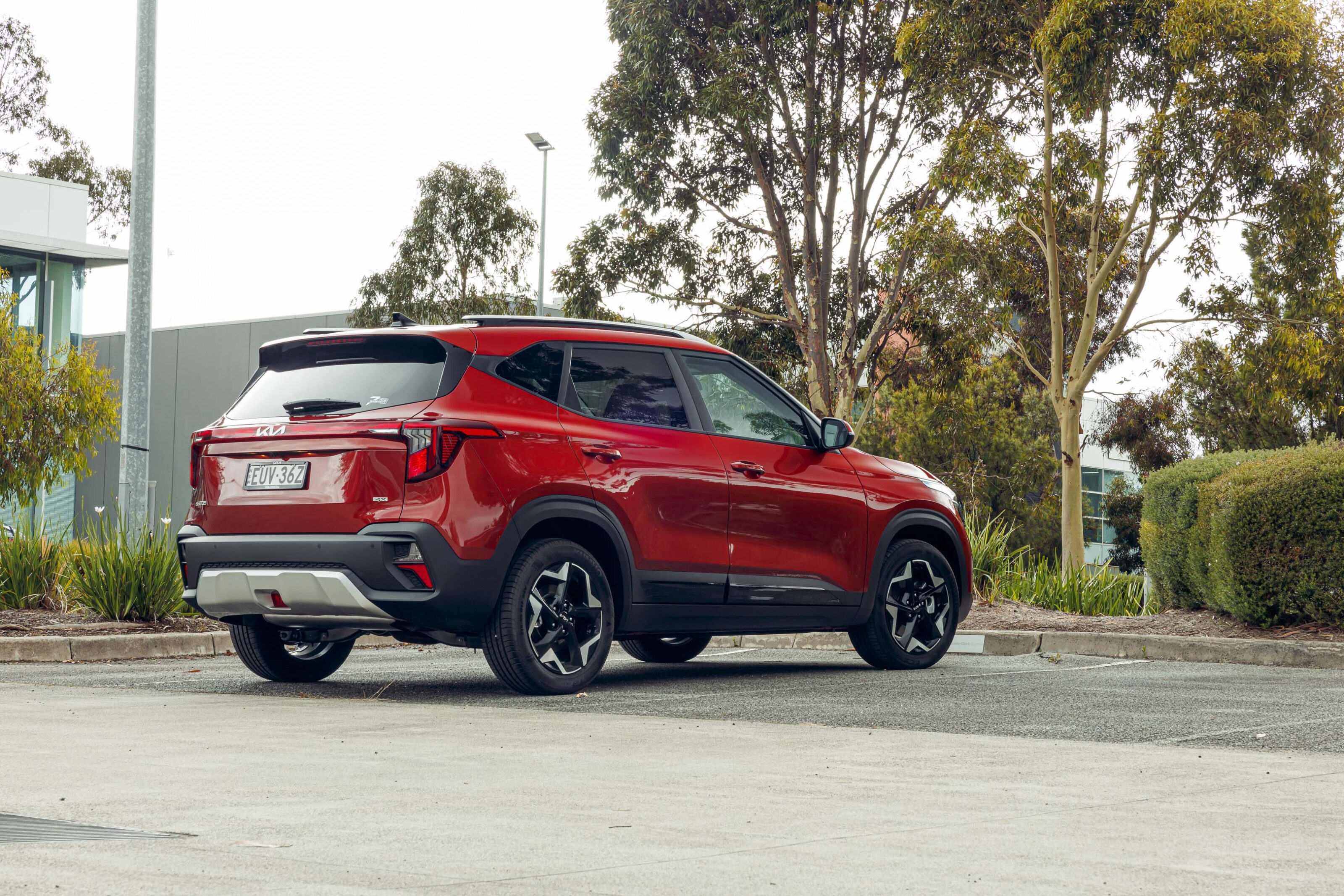
Kia Seltos: The basics
| Model | Kia Seltos Sport+ AWD |
|---|---|
| Engine | 1.6-litre four-cylinder turbo-petrol |
| Power | 146kW |
| Torque | 265Nm |
| 0-100km/h | 8.5 seconds (claimed) |
| Transmission | 8-speed torque converter automatic |
| Body | 5-door, 5-seat small SUV |
| Fuel/tank | 91 RON / 50 litres |
| Fuel economy | 8.5L/100km (tested) |
| Boot space | 433L |

JUMP AHEAD
- How much is it, and what do you get?
- How do rivals compare on value?
- Interior comfort, space and storage
- What is it like to drive?
- How is it on fuel?
- How safe is it?
- Warranty and running costs
- VERDICT
- Specifications
Check out John Law’s launch review of the updated 2023 Kia Seltos below
RELATED VIDEO
How much is it, and what do you get?
The 2023 Kia Seltos Sport+ 1.6T AWD is priced at $39,300 before on-road costs.
At the time of writing, it can be purchased with a national $41,990 drive-away price.
Kia also offers the Sport+ with a naturally-aspirated 2.0-litre petrol engine, automatic continuously variable transmission (CVT) and front-wheel-drive at $35,800 before on-road costs.
This powertrain is also available for the flagship GT-Line ($41,500 plus on-roads), which could be a compelling alternative to the Sport+ 1.6T AWD.
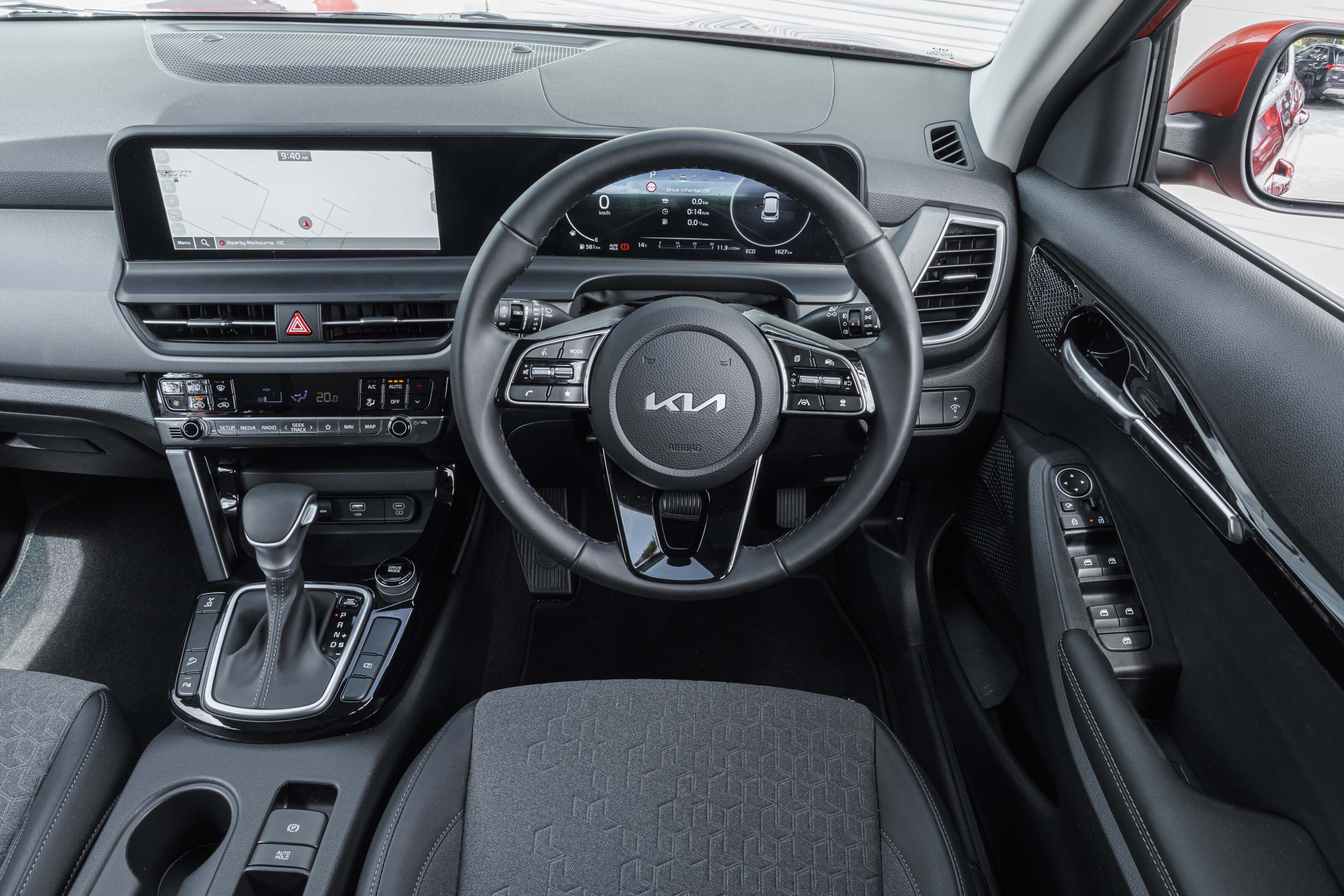
Our example was finished in Mars Orange, which is the only no-cost paint colour for the Seltos, as the rest of the colour palette – Snow White Pearl, Steel Grey, Gravity Grey, Pluton Blue, Neptune Blue, and Fusion Black – incurs a $520 charge.
In addition to the optional turbocharged engine and all-wheel-drive, the Sport+ gains adaptive cruise control, cyclist and junction-turning detection for its autonomous emergency braking system, keyless entry and push-button start, an electric park brake with auto-hold, privacy glass, and an auto-dimming rear-view mirror.
There are also heated side mirrors, a sliding front centre console armrest, a rear-centre armrest, and cloth and artificial leather upholstery.
For the recent Seltos update, the technology suite has improved with a 10.25-inch digital instrument cluster, a USB-C port, two rear USB-C charge ports, and the brand’s nifty Kia Connect functionality.

The latter feature, which utilises a built-in 4G data connection, enables owners to lock/unlock their vehicle and remotely start the engine from a smartphone app. It also includes remote climate control, sending navigation destinations to the vehicle, vehicle tracking, a ‘valet parking mode’, vehicle status, and SOS emergency call.
While it required multiple attempts at times, the remote engine start and lock/unlock is reasonably quick to action – although this is all but redundant if you’ve got the physical key at hand, as it’s still required to drive the vehicle.
Perhaps the greatest benefit is a phone notification if the vehicle is left unlocked after five minutes, or the ability to track it. And – unlike Toyota Connected Services – the function is complimentary for the first seven years.
Kia’s latest 10.25-inch infotainment system is decent, with an easy-to-use interface and snappy graphics – although every grade with the larger widescreen unit reverts to wired Apple CarPlay and Android Auto, whereas a wireless connection is available in the Seltos S with its smaller 8.0-inch unit.
Kia’s Connected Services remote connectivity is complimentary for the first seven years.
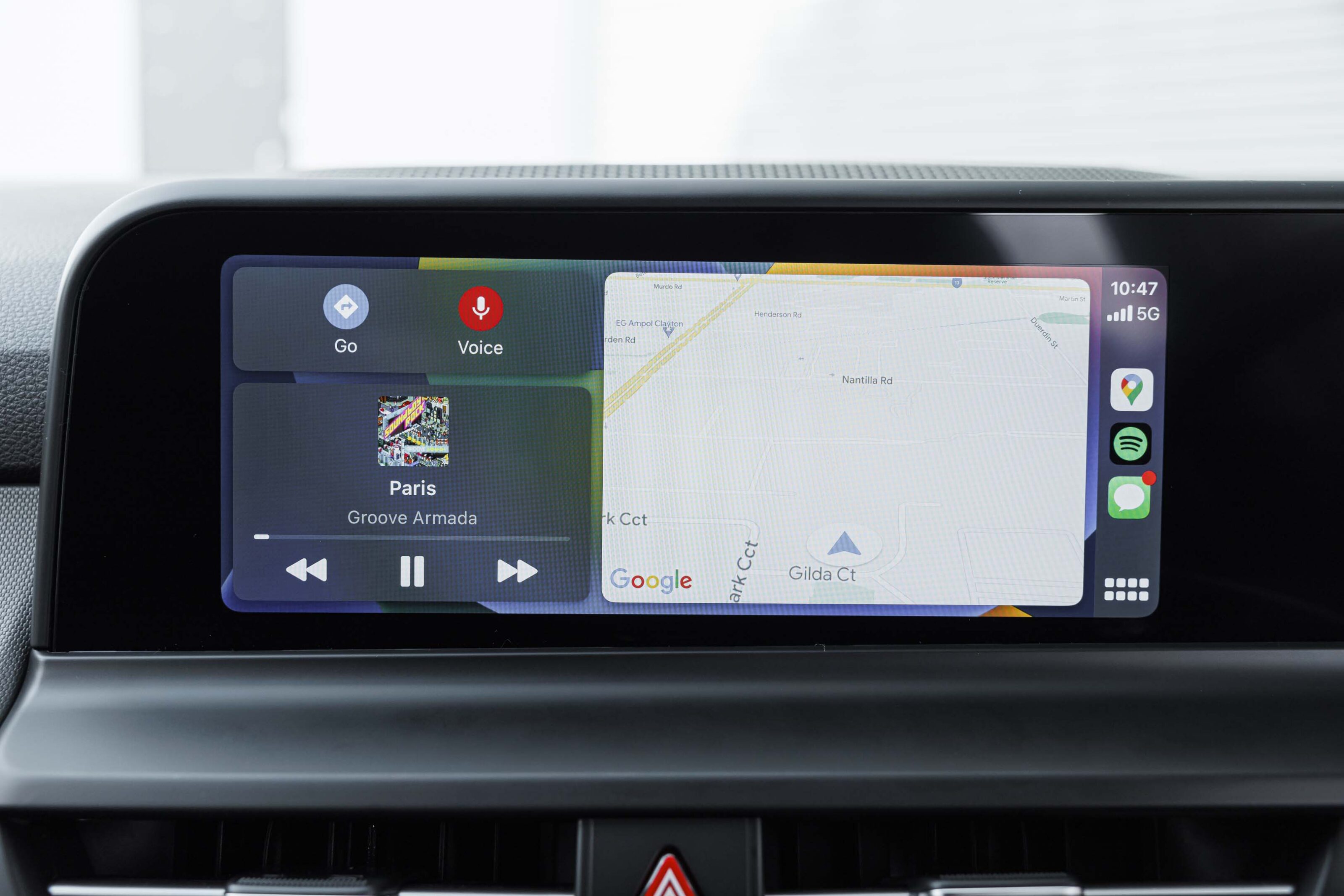
It also features built-in satellite navigation, while the six-speaker audio system is neither outstanding nor terrible, with acceptable sound rendering. An eight-speaker Bose audio system is available on the GT-Line.
The facelifted Seltos also gained rear air vents, which is a much-needed addition for those with frequent back-seat passengers.
However, while the recent update brought appealing new additions – including Kia Connect and the digital instrument cluster – it failed to address the lack of equipment across the line-up unless you opt for the range-topper.
Of course, there needs to be a level of differentiation between each grade with premium features reserved for flagship models, but even the Sport+ omits basic features that should be expected in a $40,000 small SUV.
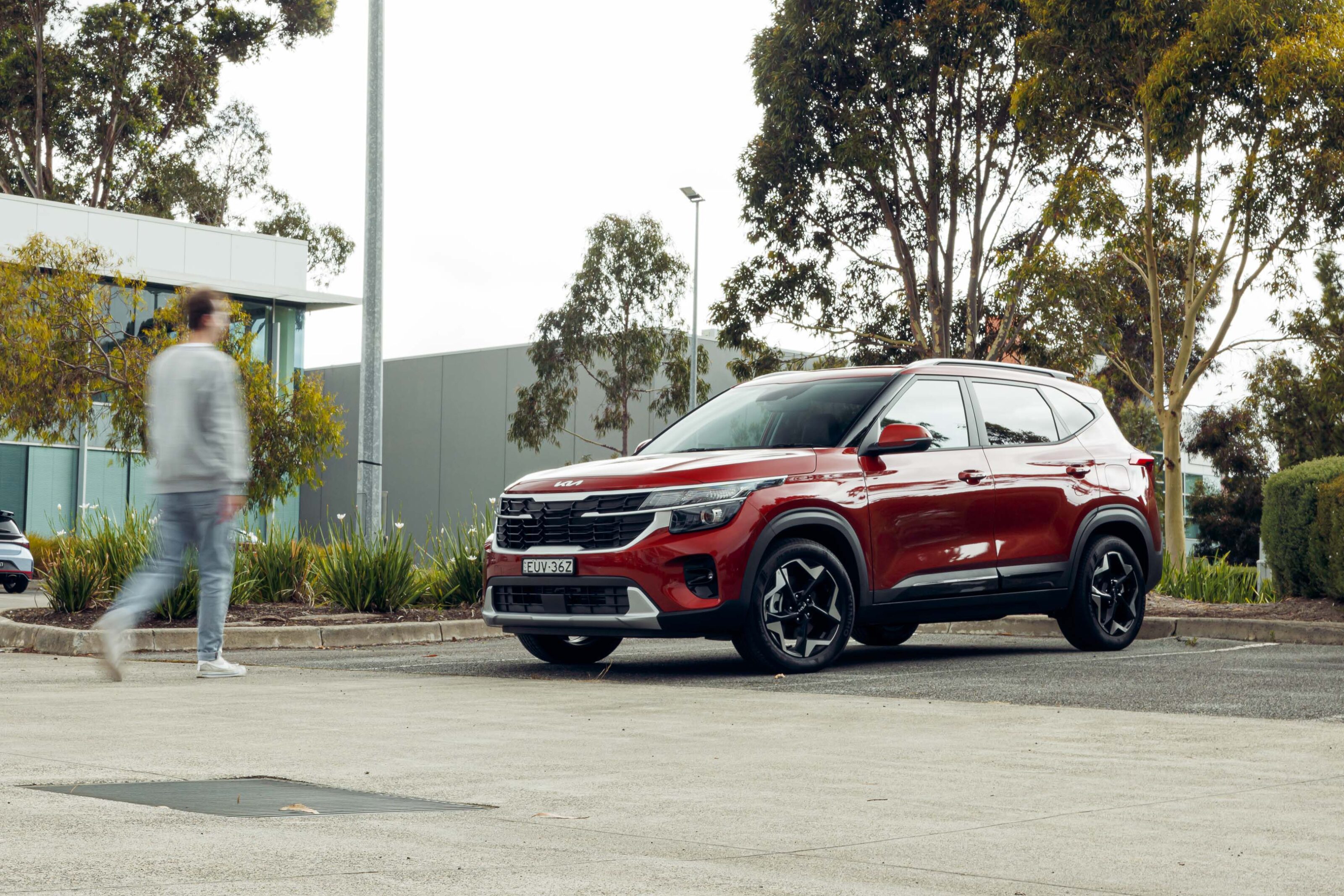
This includes rain-sensing wipers, a head-up display, a power-adjustable driver’s seat, paddle shifters and a luggage cover – the latter was included in the pre-facelift Sport+, but removed for model year 2023.
Further, it is disappointing to see halogen lighting – a frequent complaint for the pre-facelift Seltos – remain for the updated Sport+. Strangely, there are LED cabin lamps, but every light globe outside is incandescent, which doesn’t help to boost the Seltos’s visual appeal, especially with its yellow-looking daytime running lamps.
2023 Kia Seltos features
| S | Sport (in addition to S) | Sport+ (in addition to Sport) | GT-Line (in addition to Sport+) |
|---|---|---|---|
| 16-inch alloy wheels | 17-inch alloy wheels | Adaptive cruise control | 18-inch alloy wheels |
| Halogen exterior lighting | 10.25-inch digital instrument cluster | Satellite navigation | LED exterior lighting |
| 4.2-inch digital instrument cluster | 10.25-inch infotainment system | Keyless entry and push-button start | Heated and ventilated front seats |
| Cloth upholstery | Wired Apple CarPlay and Android Auto | Cloth/artificial leather upholstery | Eight-speaker Bose audio system |
| Six-speaker audio system | Auto-folding side mirrors | Auto-dimming rear-view mirror | Heated steering wheel |
| 8-inch infotainment system | Kia Connect | Sliding centre console armrest | Wireless phone charger |
| Wireless Apple CarPlay and Android Auto | Leather-appointed steering wheel and gear shifter | Rear-centre armrest | Electrically-adjustable front seats |
| Rear air vents | DAB+ digital radio | Privacy glass | Electric tailgate |
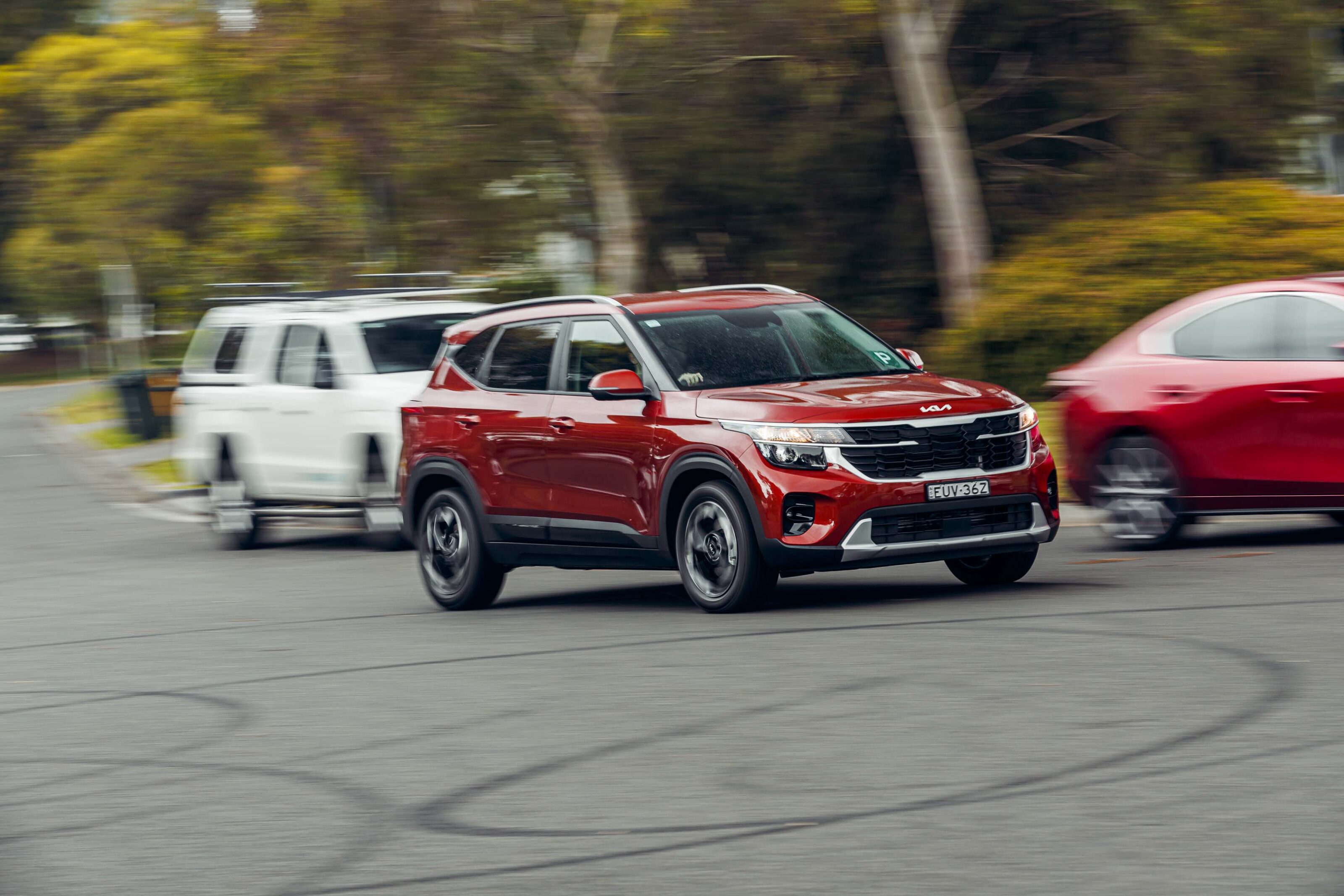
How do rivals compare on value?
The small SUV segment is growing rapidly, and, as such, the Kia Seltos has many competitors including the Mazda CX-30, Toyota Corolla Cross, Hyundai Kona, Nissan Qashqai, Volkswagen T-Roc, Skoda Kamiq and GWM Haval Jolion.
Under the skin, the Kia Seltos is closely related to the Hyundai Kona – but only for a few more months, as a completely new Kona is due in Australia mid-year.
The current Kona features the same 1.6-litre turbo-petrol as the Kia, albeit with a seven-speed dual-clutch automatic transmission rather than the facelifted Seltos’s improved eight-speed torque converter.
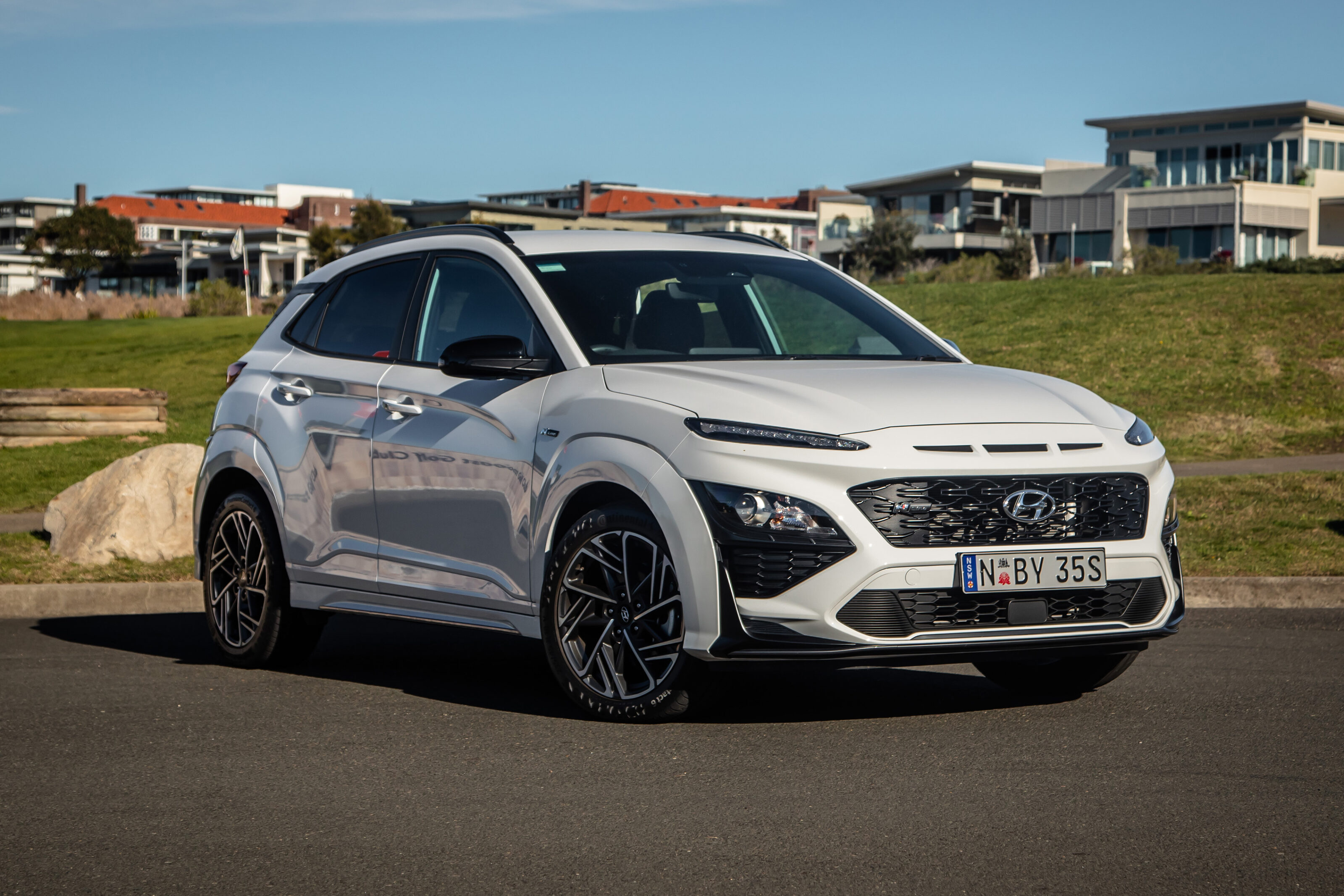
It is priced from $37,100 before on-road costs in N Line form, but it trades the Kia’s longer warranty, greater space and enhanced specification for a sportier design inspired by the full-fat Kona N.
As for the Mazda CX-30, it is listed at $40,190 plus on-roads for the G25 Touring AWD. While its technology suite isn’t as broad, the CX-30 counteracts with a far more appealing cabin, pleasant dynamics, and a standard head-up display.
If you’re looking to cut your fuel bill with an electrified small SUV, the front-drive Toyota Corolla Cross GXL Hybrid matches the Kia on price ($39,250 plus on-road costs) – but it’s likely to incur an extended wait time.
2023 Kia Seltos Sport+ AWD rivals
| Kia Seltos Sport+ AWD | $39,300 plus on-road costs |
|---|---|
| Hyundai Kona N Line AWD | $37,100 plus on-road costs |
| Mazda CX-30 G25 Touring AWD | $40,190 plus on-road costs |
| Toyota Corolla Cross GXL hybrid AWD | $42,250 plus on-road costs |
| Nissan Qashqai ST-L FWD | $42,190 plus on-road costs |
| Volkswagen T-Roc 110TSI Style FWD | $37,250 plus on-road costs |
| Skoda Kamiq 110TSI Monte Carlo FWD | $40,590 plus on-road costs |
| GWM Haval Jolion S FWD | $36,990 drive-away |
Interior comfort, space and storage
The updated cabin in the 2023 Kia Seltos has lifted its ambience – at least visually. It is centred around a redesigned centre stack with dual 10.25-inch screens, smarter-looking air vents and revised climate controls, which replace dials with more spread-out buttons.
As before, only single-zone climate control is available, and it worked well during the curveballs of Melbourne’s summer – cold and rainy one day, hot and humid the next.
While frequently touched items such as the door handles and soft leather-accented steering wheel feel nicely appointed, there’s still plenty of scratchy black plastic throughout.
For instance, the door tops are hard to the touch, and any material that isn’t padded feels as if it were plucked straight out of the cost-cutting Kia Picanto or an MG ZS.
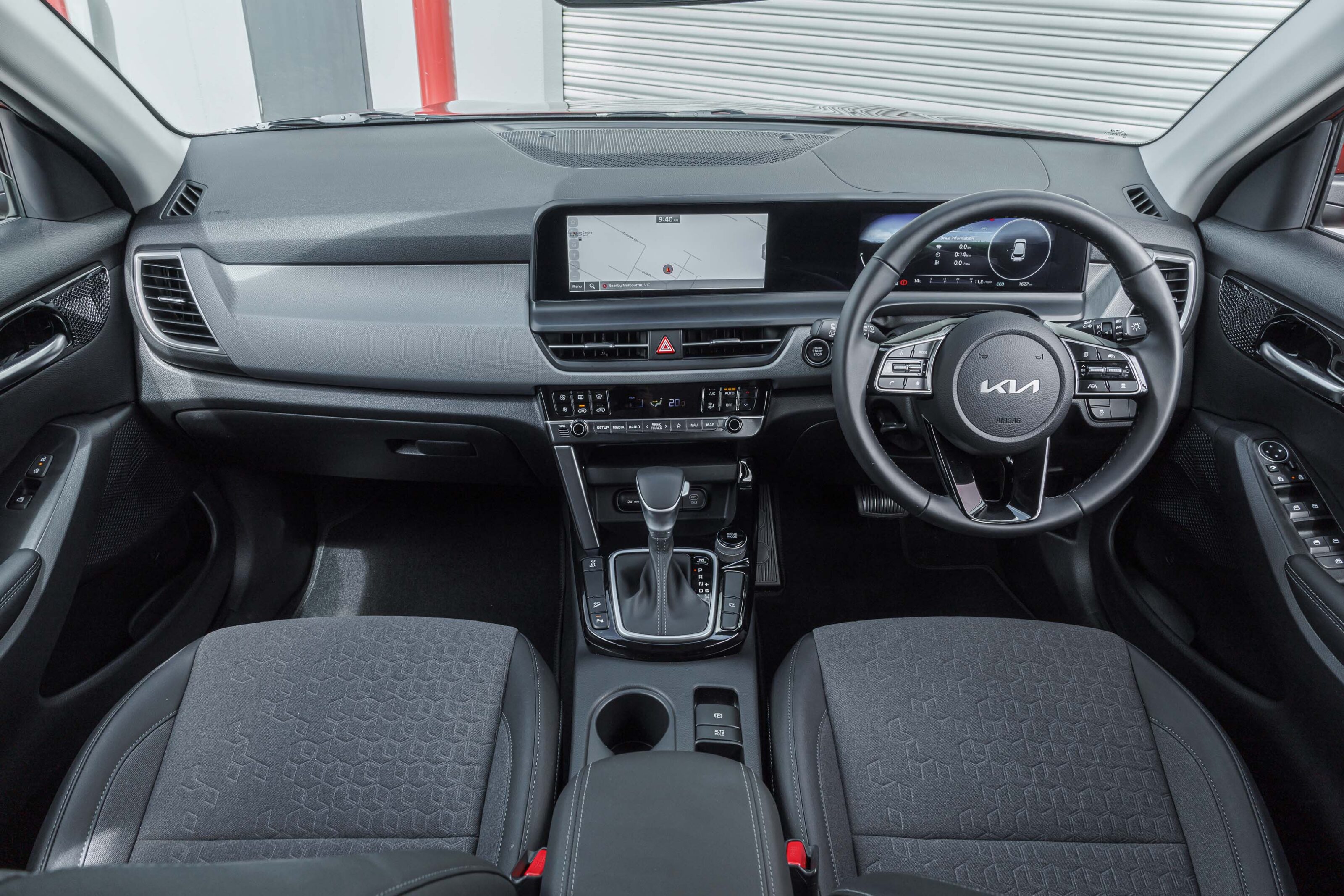
The mid-spec Sport+ gains a sliding centre console armrest to aid comfort on longer trips, while each grade includes a USB-A port for smartphone mirroring, a fast-charging USB-C port, and a 12-volt socket.
A pair of cup holders and a two-tiered storage compartment are ahead of the gear shifter, while the door bins can accommodate smaller bottles.
Though electric adjustment for the driver’s seat would be nice, the manual levers and dials still allow you to set it nice and low – but the passenger seat lacks height adjustment.
The cloth and artificial leather upholstery feels well-padded and comfortable, although it isn’t as good as the driver’s seat in the Mazda CX-30 on longer trips, at least for this writer.
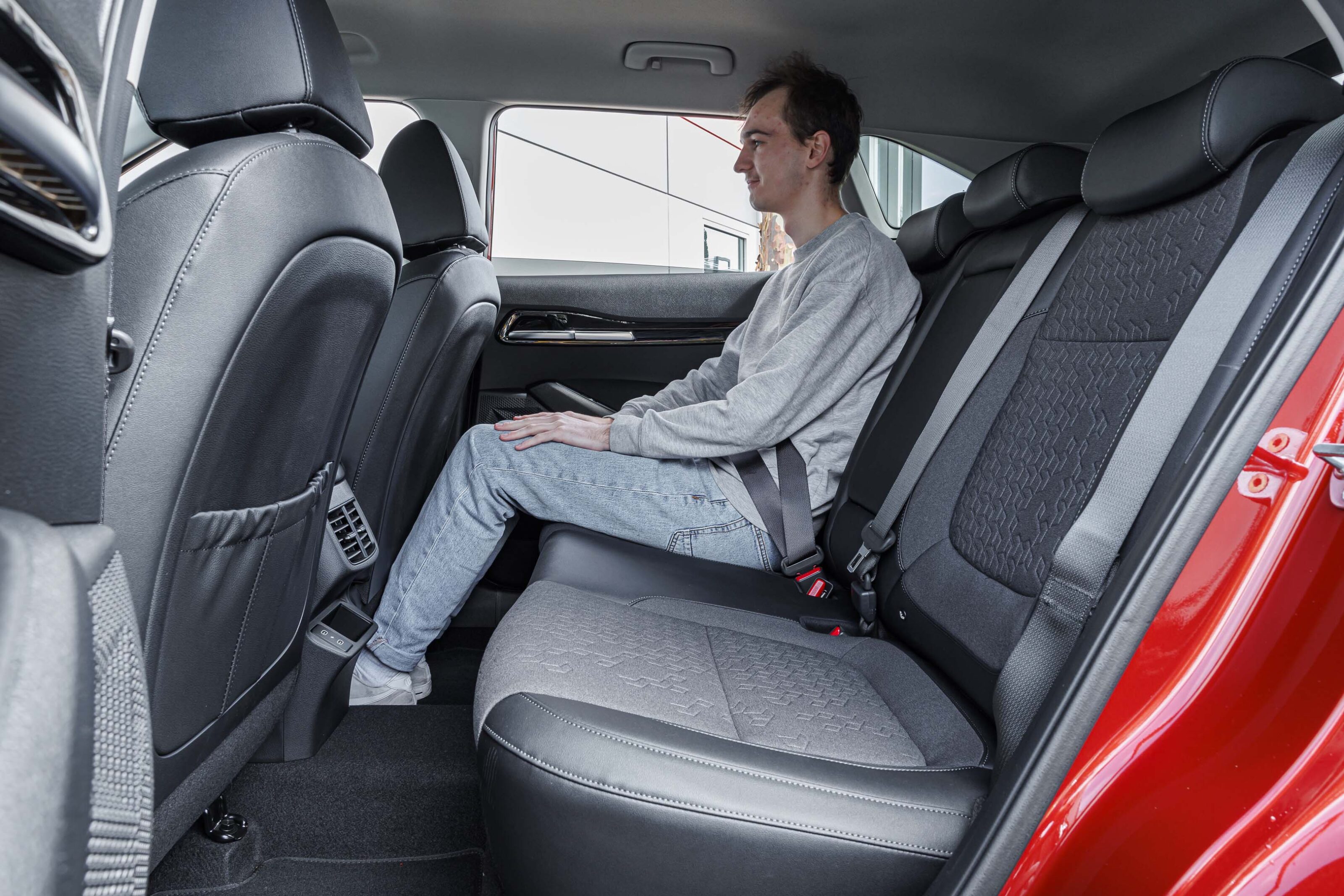
Where the Kia Seltos beats the CX-30 is in the rear, with a decent amount of space. It is impressive for a small SUV, with generous head, leg and toe room for me at 182cm tall.
For younger passengers, there are ISOFIX points for the outboard seats and three top-tether points. The addition of rear air vents is a much-needed change for the Australian market, while children will also be able to keep their devices topped up with two fast-charging USB-C ports.
Again the material quality is questionable, with hard plastics – including behind the front seats – rather than cloth upholstery. A map pocket is fitted behind the passenger seat.
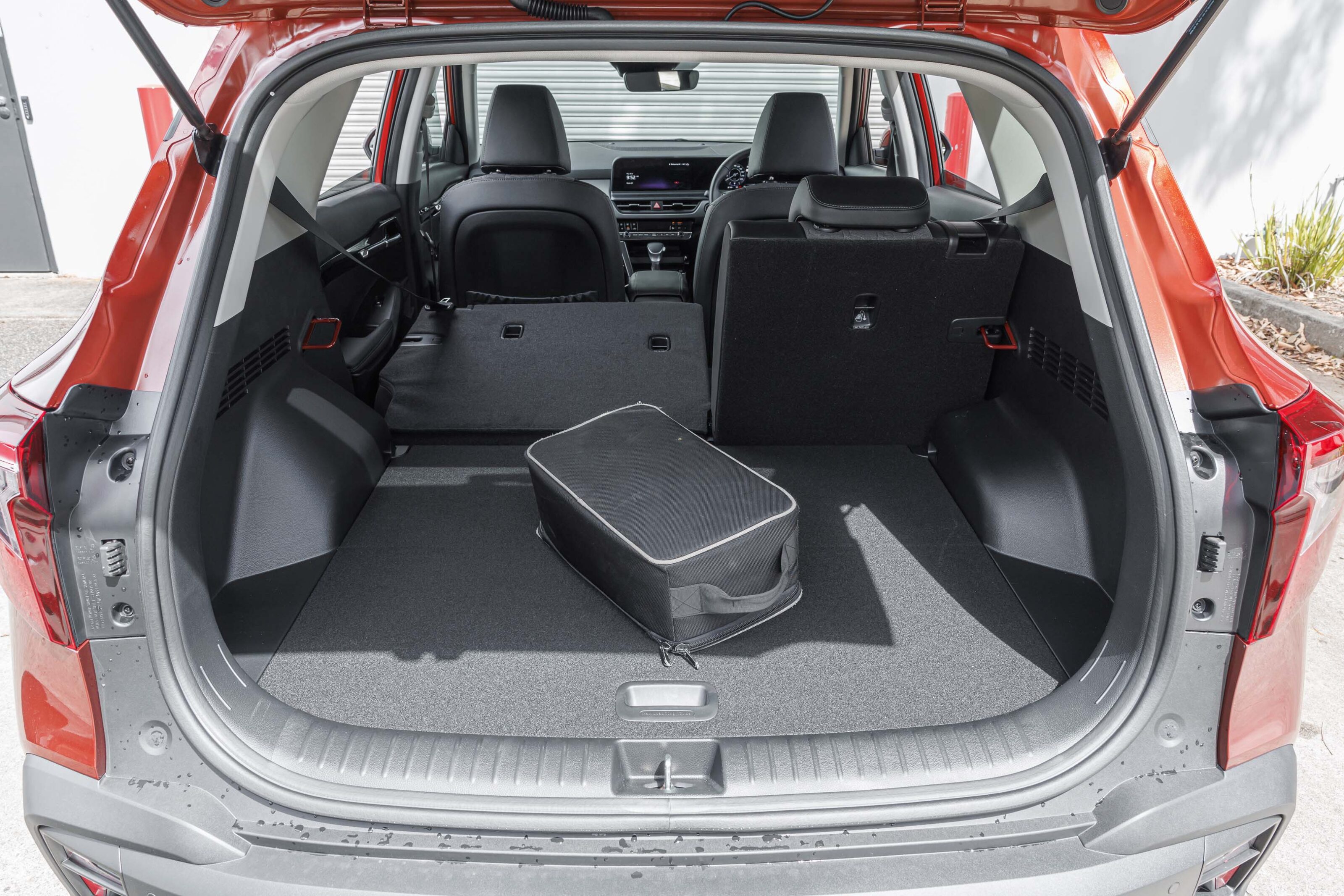
2023 Kia Seltos boot space
An advantage of the Kia Seltos is its capacious boot – even with a full-size spare wheel underneath the floor for the Sport grade and above. While it can’t quite match the entry-level S with its space-saver spare and 468-litre capacity, the rest of the Seltos range is beyond generous at 433L.
This extends to 1393 litres with the second row folded flat. It lacks a quick-release lever in the boot, meaning you’ll need to manually fold the 60:40 split-fold bench, which is common in the small SUV segment.
| Small SUV boot comparison | |
|---|---|
| Volkswagen T-Roc 110TSI Style | 445L |
| Kia Seltos Sport+ AWD | 433L |
| GWM Haval Jolion S | 430L |
| Nissan Qashqai ST-L | 429L |
| Toyota Corolla Cross GXL petrol | 425L |
| Skoda Kamiq 110TSI Monte Carlo | 400L |
| Hyundai Kona N Line | 374L |
| Mazda CX-30 G25 Touring | 317L |
What is it like to drive?
The big news for the updated Kia Seltos is its revised 1.6-litre turbocharged powertrain and transmission change.
The previous 1591cc ‘Gamma’ turbo-four has been replaced by the newer 1598cc ‘Smartstream’ unit, as found in the Hyundai Kona N Line, among others.
It results in a 16kW power bump to 146kW (torque remains unchanged at 265Nm), while the claimed 0-100km/h sprint is a tenth quicker at 8.4 seconds. In addition, its overtaking performance at 80-120km/h is said to take 5.7 seconds, which is half a second faster.
Other revisions include continuously variable valve duration technology for improved efficiency – at a claimed 7.4L/100km vs 7.6L/100km previously – and a quieter engine note.
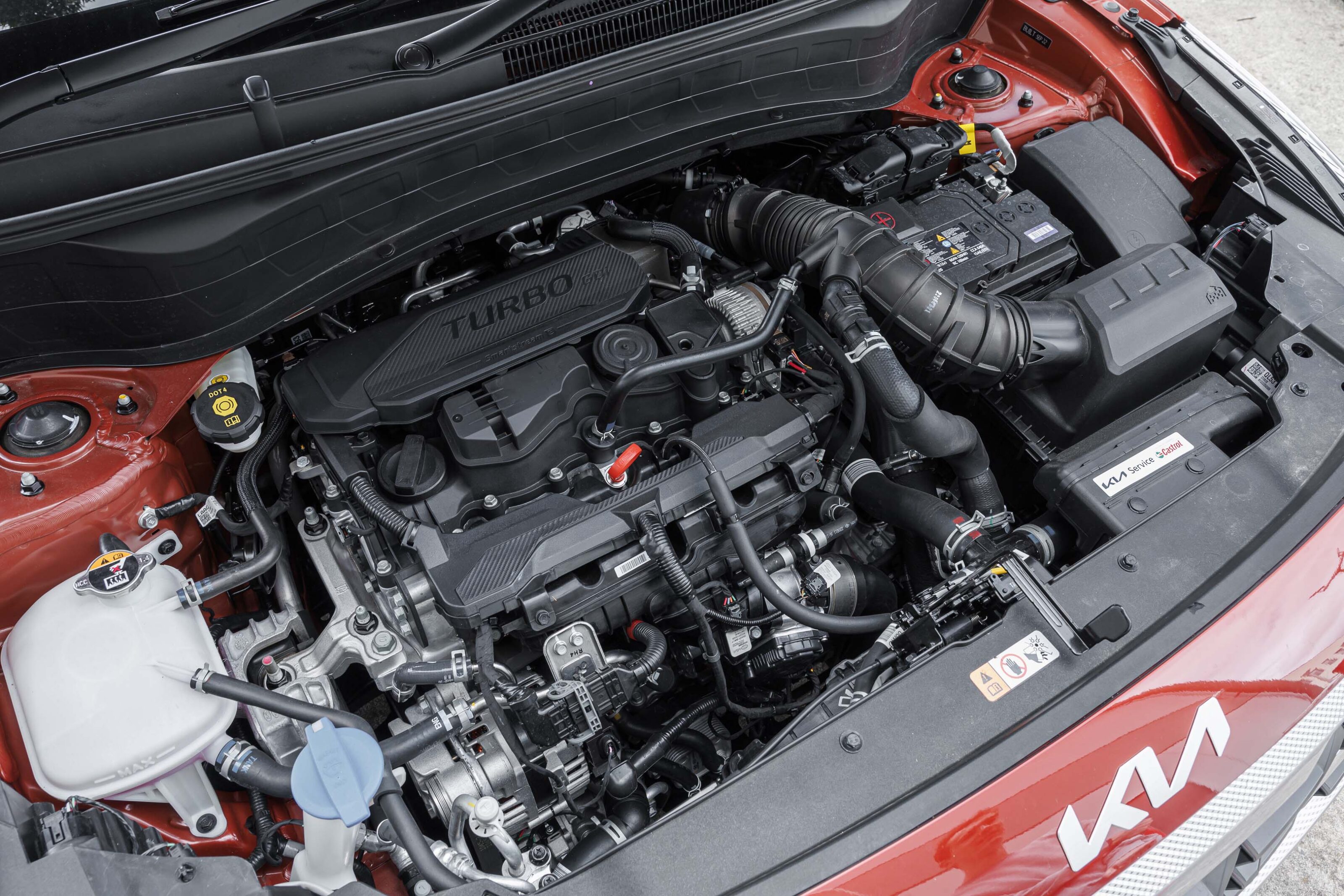
However, while the Kona retains its seven-speed dual-clutch automatic transmission, the facelifted Seltos features an Aisin-sourced eight-speed torque converter auto. This unit is an improvement over this dual-clutch in the pre-facelift Seltos, especially at lower speeds where it tended to deliver jerky shifts.
As for ride and handling, Kia’s local suspension and steering tune is identical to the old model – but this is no bad thing.
Under the skin, the all-wheel drive Kia Seltos includes multi-link independent rear suspension, whereas front-drive variants have a simpler torsion beam set-up.
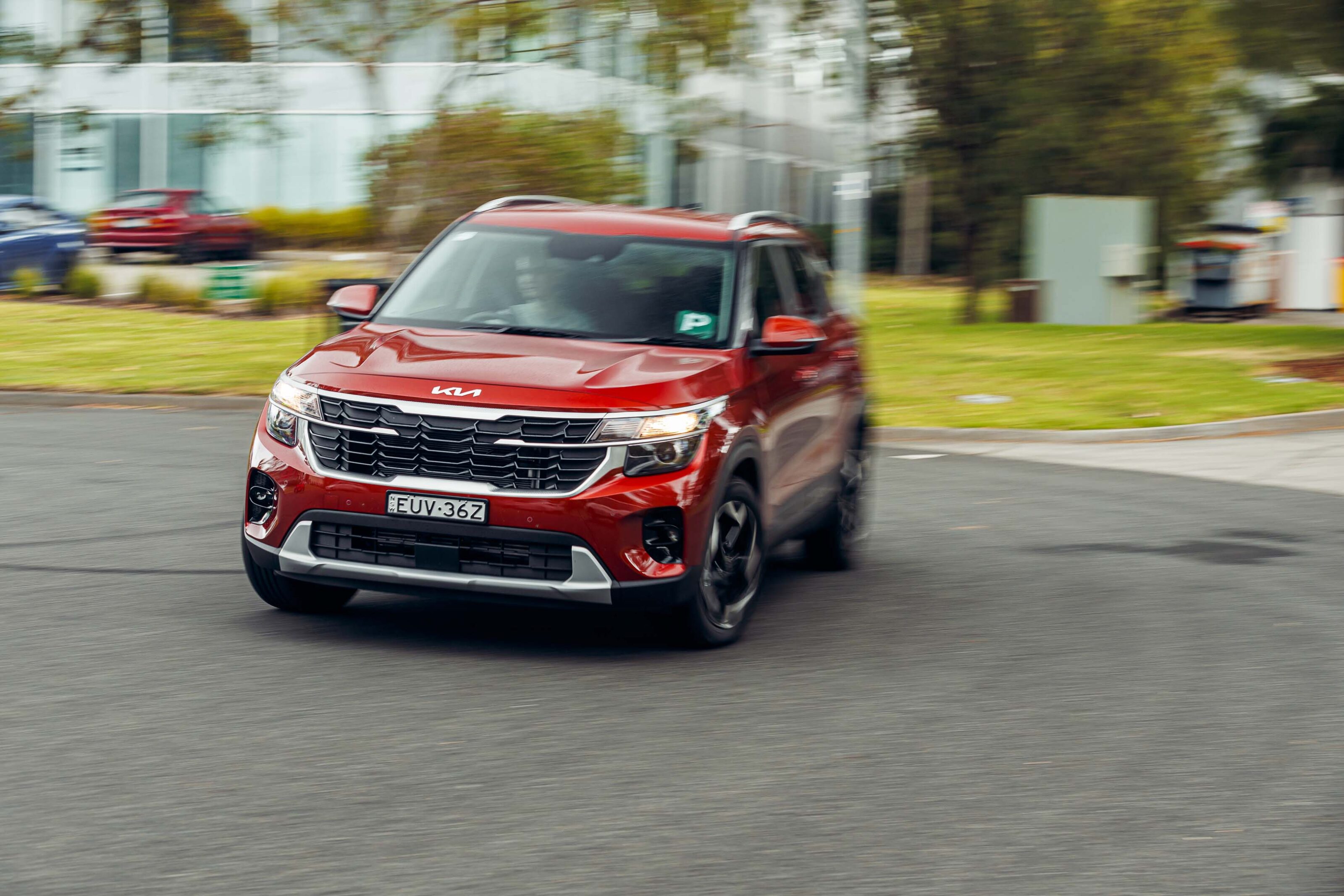
Seltos is up there as one of the better-handling small SUVs, with similar traits to the Mazda CX-30, which feels just as planted as a good hatchback.
The Seltos has a firm suspension tune, while there’s agile handling with a sharp turn-in and decent corner support. It feels at home around tight country roads.
Road and engine noise have improved with more sound deadening behind the pillars, door trims, carpet and wheelarches for the updated model, ensuring the Seltos continues to offer a pleasant experience behind the wheel – especially with its 1.6-litre turbo.
How is it on fuel?
The official combined-cycle figure for the all-wheel drive, 1.6-litre turbo-petrol 2023 Kia Seltos is 7.4L/100km.
During my week with this tester, a combination of urban, highway and rural driving returned 8.5L/100km, although this is likely to climb if you spend little time outside the suburbs.
It is compatible with 91 RON unleaded petrol and has a 50-litre fuel tank.
Kia has ruled out adding electrification to the current Seltos, but the next model – due around 2025 – will likely add a greener hybrid option.
In the interim, the brand will happily sell you its Niro small SUV – but the $44,380 (plus on-road costs) S Hybrid is far from good value for money, nor can it match the Seltos 1.6-litre turbo for performance.
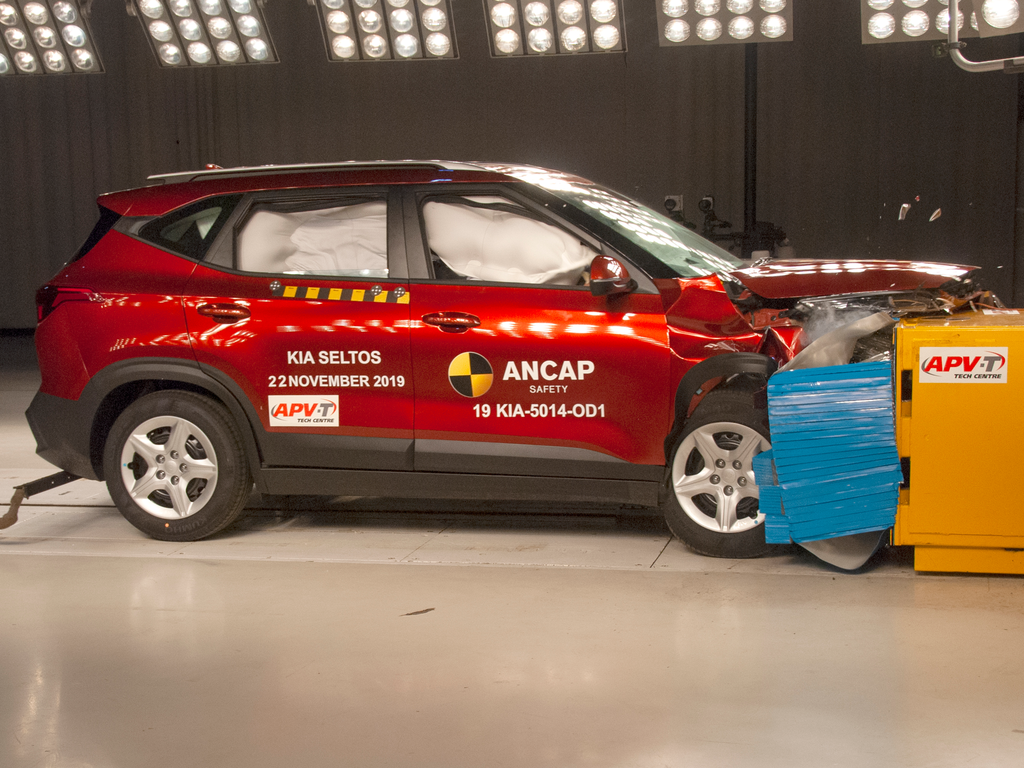
How safe is it?
A five-star ANCAP safety rating applies to the Kia Seltos range, based on testing conducted in 2019.
Six airbags – dual front, side and curtain – are fitted, but it lacks a front-centre airbag to prevent head clashes between the driver and front passenger in a side-impact collision, as found in its fresher rivals.
As standard, the Kia Seltos Sport+ includes a large chunk of active safety equipment, including a radar sensor for adaptive cruise control and an upgraded autonomous emergency braking system with cyclist and intersection detection.
This is an improvement over the manual cruise control – and basic, camera-only vehicle and pedestrian detection – in lower grades.

| 2023 Kia Seltos Sport+: Safety equipment | |
|---|---|
| Six airbags | High-beam assist |
| Anti-lock brakes | Blind-spot monitoring |
| Stability and traction controls | Rear cross-traffic alert |
| Autonomous emergency braking (vehicle, pedestrian, cyclist and intersection detection) | Driver attention alert |
| Lane-keep assist and departure warning | Rear occupant alert |
| Reversing camera | Traffic sign recognition |
The lane-keep assist system is decent, but not the best in the segment. It includes a lane-tracing function, which can keep the Seltos in the centre of its lane, even around corners – but it quickly loses its touch with faded lane markings.
Perhaps the most frustrating change for the updated Seltos is the addition of intelligent speed-limit assist. As my colleague John Law found at the Seltos media launch, this system defaults to ‘on’ with every start-up – even if you choose to turn it off.
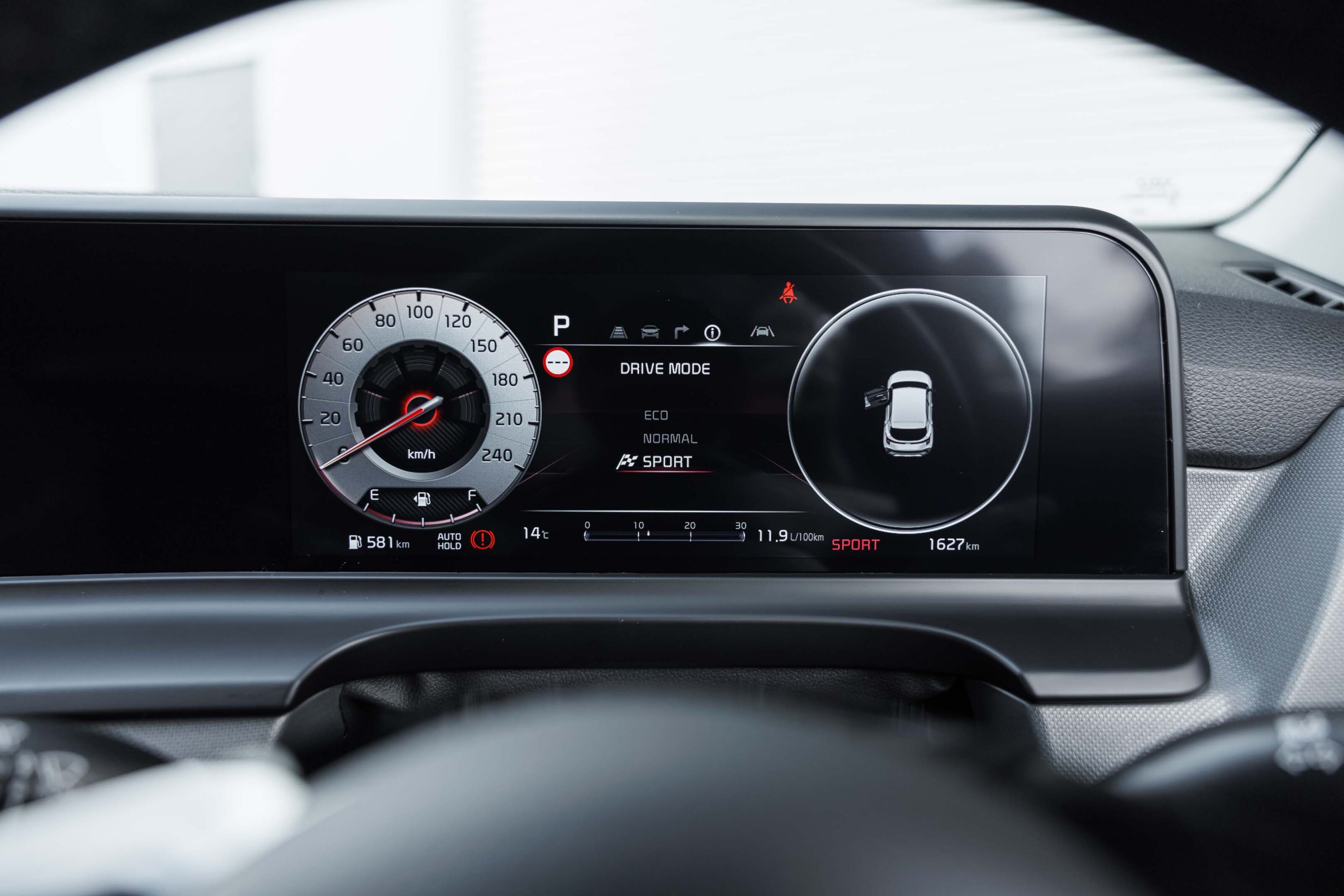
While the traffic sign detection works well – although it lacks the intelligence to understand when a school zone or temporary speed limit is in force – it is undermined by a frustrating chime that will shout at you at one kilometre over the detected limit, even if the vehicle’s true GPS speed is within the threshold.
To turn it off, you need to jump through three menus within the infotainment system, which proved to be a hindrance during our week with the Seltos.
An easy fix could be to set a threshold, or to remember the last setting, via a future software update, but it’s believed Europe’s mandated anti-speeding technology is to blame for the change.
Warranty and running costs
As with the wider Kia range, the Seltos is covered by the brand’s seven-year, unlimited-kilometre warranty, with seven years of capped-price servicing.
Roadside assistance is complimentary for the first 12 months of ownership. If the vehicle is serviced annually at a Kia dealership, this can be extended for up to eight years.
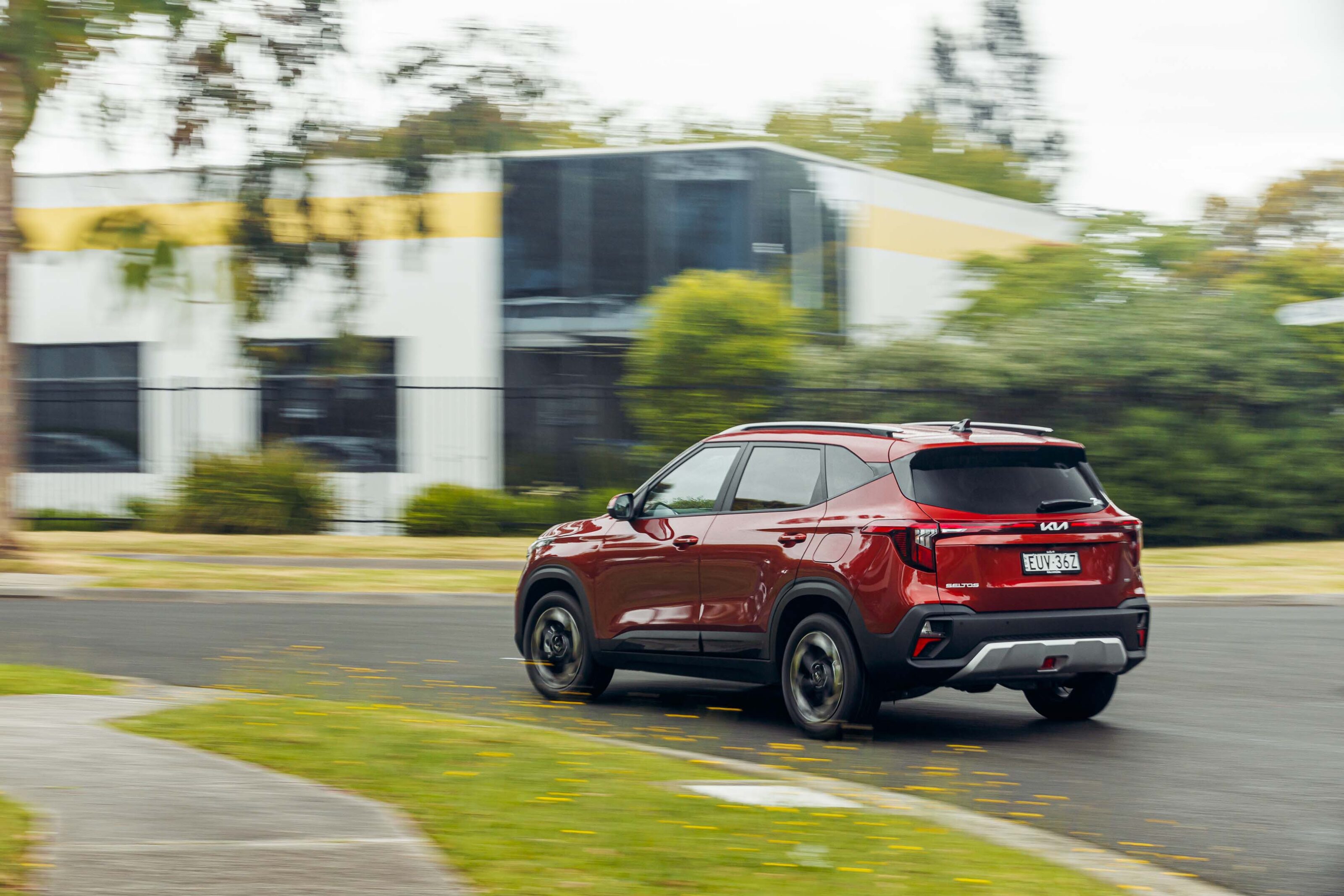
Maintenance for the turbocharged variant is required every 12 months or 10,000 kilometres, whichever occurs first. This is shorter than the naturally aspirated Seltos, which allows 15,000 kilometres between services.
Kia’s capped-price program will set you back $3214 over the seven-year duration at an average of $459 per service, which is dearer than offerings from the likes of Honda, Toyota, Mazda and Hyundai.
| 2023 Kia Seltos 1.6T AWD capped-price servicing | |
|---|---|
| One year/10,000km | $275 |
| Two years/20,000km | $466 |
| Three years/30,000km | $339 |
| Four years/40,000km | $600 |
| Five years/50,000km | $309 |
| Six years/60,000km | $593 |
| Seven years/70,000km | $632 |
This is considerably more expensive than the Toyota Corolla Cross, which is capped at $250 for the first five services. Even the Hyundai Kona N Line – which features the same powertrain as the pre-facelift Seltos – is cheaper over seven years at $2575, or an average of $368 per service.
VERDICT
The 2023 Kia Seltos is one of Australia’s best small SUVs, and the latest update has improved its value proposition.
While the Sport+ is hampered by odd product planning, it is still the pick of the bunch – especially when fitted with the optional 1.6-litre turbocharged engine and all-wheel drive.
However, if your budget allows, it’s worth upgrading to the GT-Line for the added equipment, including LED exterior lighting and a wireless phone charger.
If it were me, I’d stick with the naturally aspirated 2.0-litre to reduce the added cost of the flagship grade – sure, it isn’t as peppy, but you save on servicing and (possibly) fuel bills.
For those pursuing a greener option, Kia will point you towards its Niro small SUV, but the Toyota Corolla Cross is the hybrid option to consider here.
However, it is likely to incur a prolonged wait time than the Seltos, which is still longer than usual (for more information on Kia’s wait times, click here).
We’ll have several Kia Seltos grades through the garage in the coming weeks – including the 2.0-litre Sport+ and the entry-level S, and Peter Anderson’s GT-Line 1.6T AWD long-termer – so stay tuned to Wheels for more.
2023 Kia Seltos Sport+ 1.6T AWD specifications
| Body | 5-door, 5-seat small SUV |
|---|---|
| Drive | all-wheel |
| Engine | 1.6-litre turbocharged four-cylinder petrol |
| Transmission | eight-speed torque-converter automatic |
| Power | 146kW @ 6000rpm |
| Torque | 265Nm @ 1600-4500rpm |
| Bore/Stroke | 75.6 x 89.0 |
| Compression ratio | 10.0 : 1 |
| 0-100km/h | 8.5s (claimed) |
| Fuel Consumption | 7.4L/100km (combined) |
| Weight | 1495kg |
| Power/Weight | 97.7kW/t |
| Suspension | MacPherson strut (front) / multi-link (rear) |
| L/W/H | 4385/1800/1635mm |
| Wheelbase | 2630mm |
| Steering | electrically assisted rack-and-pinion |
| Brakes | ventilated discs (front) / solid discs (rear) |
| Tyres | 215/55 R17 |
| Wheels | 17-inch alloy |
| Price | $39,300 + on-road costs |
Score breakdown
Things we like
- Excellent turbo powertrain
- Updated technology
- Plenty of cabin space
Not so much
- Halogen headlights
- Infuriating speed limit assist
- Poorly specced for $40K vehicle
We recommend
-
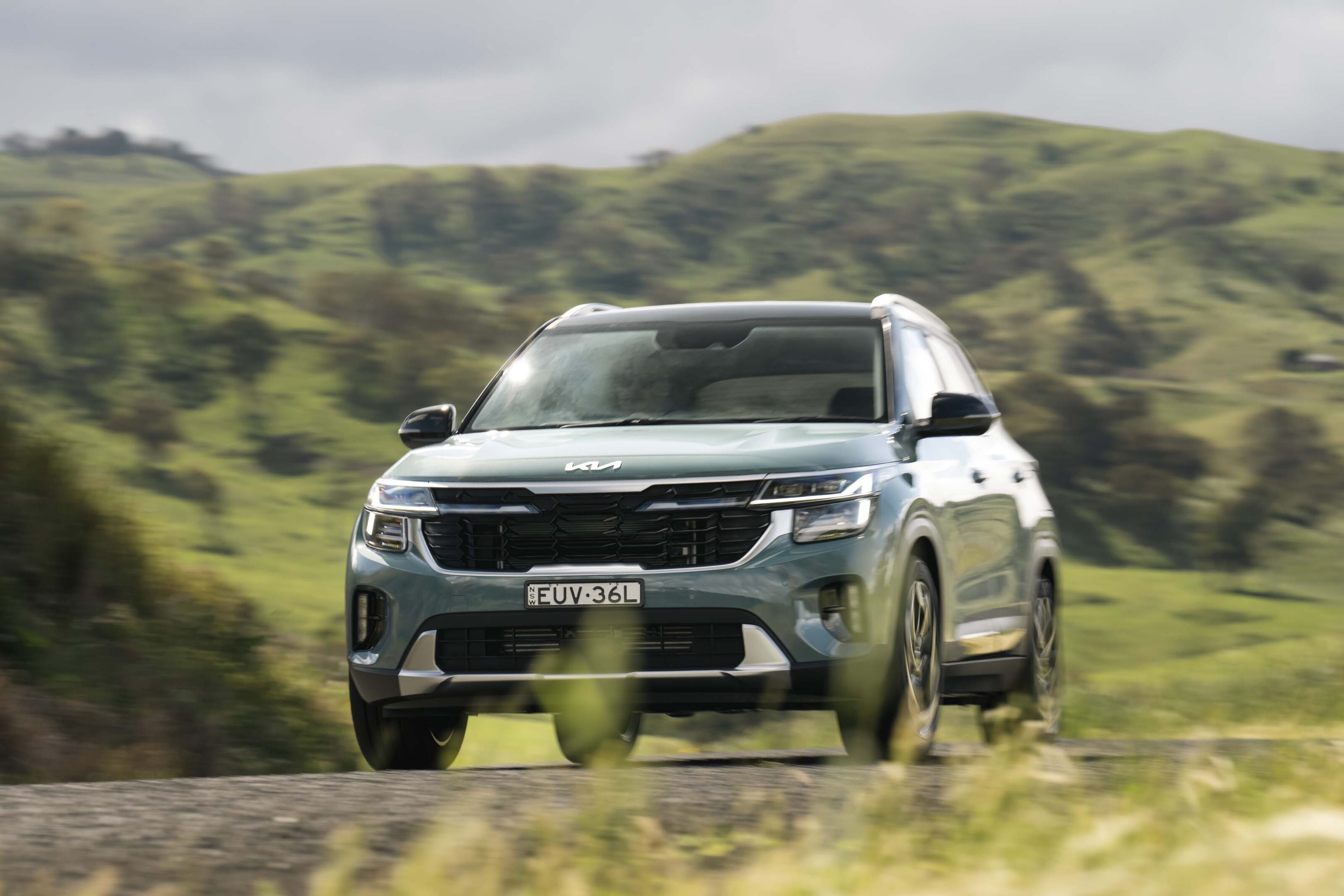 Reviews
Reviews2023 Kia Seltos review: First Australian drive
Meaner looking and now with a torque converter automatic hooked up to its 1.6 turbo-petrol, is the Seltos the best small SUV on sale in Australia?
-
 News
News2023 Kia Seltos pricing: Facelift brings tweaked look, upgraded powertrain
Australian pricing has been announced for the refreshed 2023 Kia Seltos, bringing subtly updated looks, updated tech, and a gearbox switch
-
 News
News2025 New Car Calendar: All the new cars coming to Australia
Take a look at our list of what is expected to launch in Australia in 2025 – plus those we might not see locally just yet






